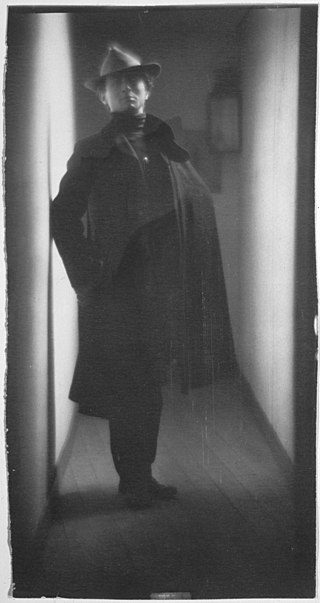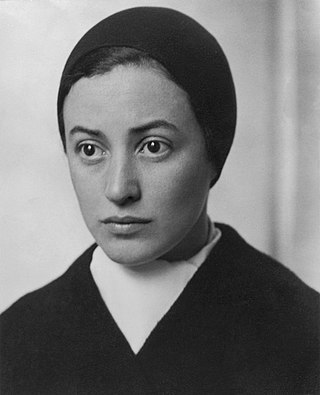Related Research Articles

Edward Jean Steichen was a Luxembourgish American photographer, painter, and curator, renowned as one of the most prolific and influential figures in the history of photography.

The Family of Man was an ambitious exhibition of 503 photographs from 68 countries curated by Edward Steichen, the director of the New York City Museum of Modern Art's (MoMA) Department of Photography. According to Steichen, the exhibition represented the "culmination of his career." The title was taken from a line in a Carl Sandburg poem.

Antoinette Frissell Bacon, known as Toni Frissell, was an American photographer, known for her fashion photography, World War II photographs, and portraits of famous Americans, Europeans, children, and women from all walks of life.

Emmy Eugenie Andriesse was a Dutch photographer best known for her work with the Underground Camera group during World War II.

Dorothy Norman was an American photographer, writer, editor, arts patron and advocate for social change.
Wayne Forest Miller was an American photographer known for his series of photographs The Way of Life of the Northern Negro. Active as a photographer from 1942 until 1975, he was a contributor to Magnum Photos beginning in 1958.
Otto Hagel (1909–1973) was a German-born American photographer and filmmaker. He and his wife Hansel Mieth were part of the school of socially conscious documentary photo-journalists that included Dorothea Lange, Imogen Cunningham, Peter Stackpole and Robert Capa. In the early 1930s, Hagel was a member of the San Francisco Film and Photo League.
Herbert Gehr (1910–1983) was a Jewish German-American photographer and television director who was associated with Life magazine.
Leon Levinstein (1910–1988) was an American street photographer best known for his work documenting everyday street life in New York City from the 1950s through the 1980s. In 1975 Levinstein was awarded a Guggenheim Fellowship from the John Simon Guggenheim Memorial Foundation.
Humanist Photography, also known as the School of Humanist Photography, manifests the Enlightenment philosophical system in social documentary practice based on a perception of social change. It emerged in the mid-twentieth-century and is associated most strongly with Europe, particularly France, where the upheavals of the two world wars originated, though it was a worldwide movement. It can be distinguished from photojournalism, with which it forms a sub-class of reportage, as it is concerned more broadly with everyday human experience, to witness mannerisms and customs, than with newsworthy events, though practitioners are conscious of conveying particular conditions and social trends, often, but not exclusively, concentrating on the underclasses or those disadvantaged by conflict, economic hardship or prejudice. Humanist photography "affirms the idea of a universal underlying human nature". Jean Claude Gautrand describes humanist photography as:
a lyrical trend, warm, fervent, and responsive to the sufferings of humanity [which] began to assert itself during the 1950s in Europe, particularly in France ... photographers dreamed of a world of mutual succour and compassion, encapsulated ideally in a solicitous vision.
Carl Perutz (1921-1981) was a New York photographer who was active from the 1930s through the 1970s covering a wide range of subject matter and in the genres of street photography, photojournalism, portraiture, fashion and advertising.
May Mirin (1900-1997) was an American photographer who documented life in Mexico.
William Vandivert was an American photographer, co-founder in 1947 of the agency Magnum Photos.
Eiju Otaki was a Japanese photographer and photojournalist active in the 1950s.
Ewing Krainin was an American magazine, advertising and travel photographer active 1940s-1970s.
Bob Schwalberg was an American photojournalist and writer on photographic technique and equipment.
John Bertolino was an American photojournalist who photographed in Italy and the United States and was active in the 1950s and 1960s.
Lisa Larsen (1925-1959) was a pioneering woman photojournalist.
Ian Smith (c.1921—c.1987) was a Scottish photographer who was on the staff of LIFE magazine in 1944.
Ted Castle (1918–2000) was an American photojournalist and member of Magnum agency.
References
- ↑ Maddow, Ben; Smith, W. Eugene, 1918-1978; Alfred Stieglitz Center; Philadelphia Museum of Art (1985), Let truth be the prejudice : W. Eugene Smith, his life and photographs, Aperture : Viking Penguin [distributor], ISBN 978-0-89381-179-2
{{citation}}: CS1 maint: multiple names: authors list (link) - ↑ Morris, John G. (John Godfrey) (1998), Get the picture : a personal history of photojournalism (1st ed.), Random House, pp. 183, 274, ISBN 978-0-679-45258-4
- ↑ Lewis, Margery (photographer) ‘LIFE visits the Stokowski Family’ LIFE 7 Sep 1953, Vol. 35, No. 10. ISSN 0024-3019. pps. 122-124
- ↑ Lewis, Margery (photographer), liner for stereo LP Elliott Carter / Harold Shapero – Sonata For Flute, Oboe, Cello & Harpsichord / String Quartet No. 1, Columbia Masterworks – MS 6176, 1960
- ↑ Photograph on jacket of Clef Records MGC 677 Norman Granz Jam Session #7
- ↑ Margery Lewis (photographer), cover photograph Friends Journal: Quaker Thought and Life Today July 1/15, 1971 Volume 17, Number 12
- ↑ Steichen, Edward; Steichen, Edward, 1879-1973, (organizer.); Sandburg, Carl, 1878-1967, (writer of foreword.); Norman, Dorothy, 1905-1997, (writer of added text.); Lionni, Leo, 1910-1999, (book designer.); Mason, Jerry, (editor.); Stoller, Ezra, (photographer.); Museum of Modern Art (New York, N.Y.) (1955), The family of man : the photographic exhibition, Published for the Museum of Modern Art by Simon and Schuster in collaboration with the Maco Magazine Corporation
{{citation}}:|author6=has generic name (help)CS1 maint: multiple names: authors list (link) - ↑ Martin, Harold. ‘Time Exposure’ Popular Photography; New York August 1953 Vol. 77, Iss. 8: 94.
- ↑ Lewis, Margery ‘Problem: Tranquility’ Popular Photography, Feb 1957, Vol. 40, No. 2. 46-49